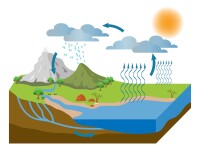Search
There are 26 results.
Category
Tag
Tag
All (62)
Active Learning (2)
Activities (1)
Analytics (1)
Assessments (3)
Asynchrony (2)
Backwards Design (1)
Canvas (3)
Collaboration (3)
Communication (4)
Community (2)
Content Creation (15)
Copyright (2)
Course Maintenance (6)
Course Materials (8)
Course Preparation (5)
Discussions (1)
Diversity (1)
Faculty Presence (2)
Faculty Support (1)
Feedback (1)
Game-Based Learning (2)
Gamification (1)
Generative AI (2)
Images (3)
Inclusion (2)
Infographics (2)
Learning Objectives (2)
Multimodality (3)
Page Design (1)
PowerPoint (2)
Presentations (1)
Qualitative courses (1)
Quantitative courses (1)
Representation (2)
Revising (2)
Revision (1)
Rubrics (1)
Screen Readers (1)
Social Media (1)
Synchrony (3)
Third-Party Tools (1)
Universal Design for Learning (UDL) (2)
Video (13)
Visual Accessibility (2)
Visual Design (2)
Incorporating Multimedia in Your Course
Multimedia, which helps create an engaging and interactive online learning environment, has been shown to contribute to improved student performance (Cheng et al., 2009, p. 1). Though many online courses incorporate videos, they neglect to feature other forms of multimedia. And, while videos are a staple of multimedia use, there are other exciting options to consider: podcast episodes, graphics, and animations can all enhance course content, enriching the student experience. To maximize the benefits multimedia can provide, consider including these underutilized forms of multimedia in your course.
Best Practices for Screencast
Do you want to deliver presentations, share tutorials, or teach complex applications in your online course? If so, creating screencasts may be a great option for you. This piece defines what a screencast is, identifies important development considerations and common instructional use cases, and highlights best practices for creating screencasts for your online course.
Data-Centric Recommendations for Video Engagement
Incorporating prerecorded videos and animations into online learning experiences allows students the opportunity to access content at any time after the material is delivered. The inclusion of video and animation in online learning is now ubiquitous. To promote engagement, it is imperative that such content be delivered to learners clearly and effectively.
Infographic Considerations
An infographic is a visual that combines text, graphics, diagrams, and graphs to present information. When used effectively, infographics can be a powerful tool to guide students through the learning process. As described by Krauss (2012), “Infographics ask for an active response from the viewer, raising the questions, ‘What am I seeing?’ and ‘What does it mean?’” (p. 10). Infographics also present information in an organized way, which can improve students’ critical thinking, analysis, and synthesis skills (Yildirim, 2016).
Data-Driven Insights for More Engaging Videos
Whether designing a fully asynchronous course or a hybrid/blended learning experience, you’re likely thinking about recording a video to explain an idea, tell a story, or demonstrate a skill. And, in many situations, you should (see the Envision piece Video Planning: To Record or Not to Record? if you are wondering whether video is appropriate for your unique situation). Most research shows that online students enjoy learning from video and that it can be an effective way to deliver content. Students often appreciate the opportunity to review material at their own pace and to pause, rewind, and rewatch content as needed (Boateng et. al. 2016; Brame 2016).
Using YouTube in Your Course
The vast majority of instructors (97%) claim that video is “essential” to students’ academic experiences (Kaltura, 2022). However, it can be difficult for faculty to find the time and motivation to create high-quality instructional videos, leading them to source third-party videos from the internet. With countless videos being uploaded every day, YouTube is a logical choice for finding free, relevant, and engaging educational content. This post discusses some of the key factors to consider when utilizing YouTube to supplement the learning materials in your course.
Video Planning: To Record or Not to Record?
For many people, “online learning” conjures images of successive videos, shot in a studio or perhaps on location, featuring high production value and expert, polished speakers, interspersed with short quizzes or activities. Indeed, strongholds such as MasterClass, LinkedIn Learning, and Coursera have mastered this formula and led many to believe that it is the recipe for success. While the economic success of these companies is undeniable, the effectiveness of an online course is measured by student success. When done well, video can have a positive impact on student learning (Clark & Mayer, 2011). Rather than designing your course according to the economic model, follow the evidence and research-based principles of visual communication, cognitive science, and online learning to decide when and how to create instructional videos. Through careful consideration of your learners, your objectives, your constraints, and the following best practices, you can spend your time and resources creating only the most essential videos. For a visual aid that accompanies this article, see the Video Planning Decision Tree.
Matching Video Production Style to Learning Goals
You have decided to record a video for your course (See this Envision post first: Video Planning: To Record or Not to Record?). Your next concern might be choosing the technology that can match the production quality of the videos in MOOCs (massive open online courses) such as MasterClass or Coursera. But have no fear—research shows no association between production value and learning outcomes (Hansch et al., 2015; Sturman et al., 2018). Furthermore, selecting your technology without initial consideration of your video style would be premature. “When thinking about video for learning, the choice of video production style will have a great impact on a video’s ability to effect pedagogical objectives and desired learning outcomes” (Hansch, et al., 2015, p. 20). Production style refers to the holistic organization of a video, which we will discuss in terms of type (what the video aims to accomplish) and output (what the video looks like). Choosing the right style for the content centers the learner and ultimately facilitates an easier selection of technology.










